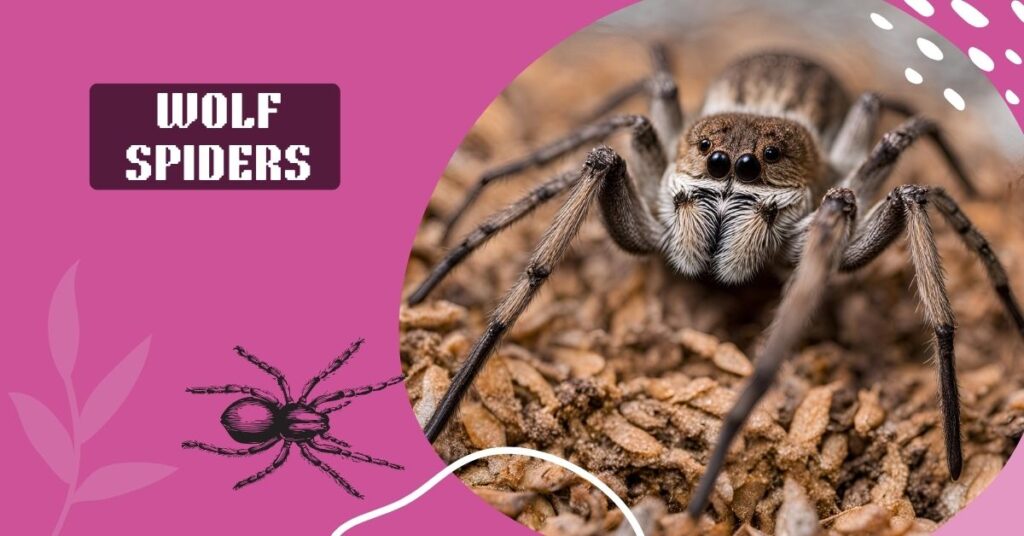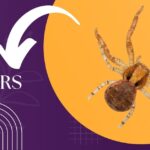Wolf spiders are intriguing animals that capture the intrigued of both insect devotees and those with a common interest almost the normal world. Known for their special chasing behavior, noteworthy speed, and striking appearance, wolf spiders are a momentous species. In this comprehensive direct, we will investigate everything you require to know around wolf spiders, counting their estimate, eye course of action, and 10 astounding actualities you won’t accept. Whether you’re looking to fulfill your interest or accumulate profitable data, this article will give an in-depth see into the world of wolf spiders.
1. Introduction to Wolf Spiders
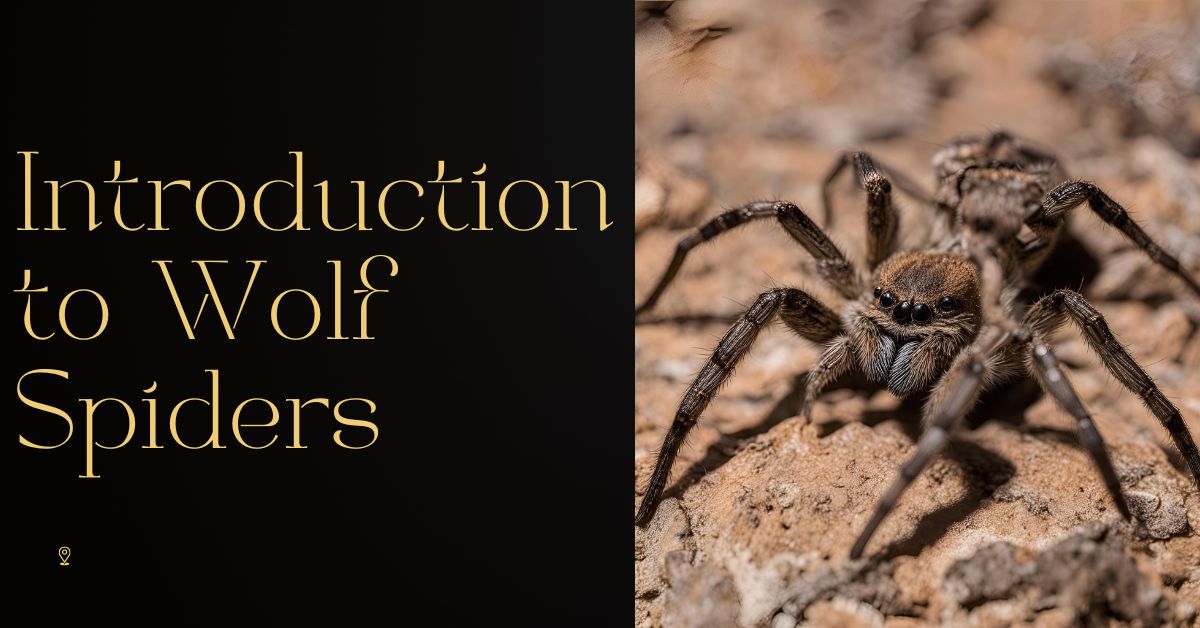
The wolf spiders have a place to the Lycosidae family, which is determined from the Greek word “lykos,” meaning wolf. These insects are named after their wolf-like chasing strategies, where they chase and jump on their prey or maybe than catching them in networks. With over 2,000 species found around the world, wolf insects shift essentially in estimate, color, and territory, but they all share certain key characteristics that make them unique.
- Wolf spiders| Estimate, Eyes, & Truths 10 Surprising Realities You Won’t Accept — this title typifies the wonders of this species. From their measure to their momentous eyes and past, wolf insects proceed to interest and flabbergast those who ponder them.
2. Wolf Insect Estimate: How Enormous Can They Get?
One of the to begin with questions individuals frequently inquire is, “How enormous do wolf insects get?” Wolf spiders change in estimate depending on the species, but most are medium to expansive in measure compared to other creepy crawlies. The body length of a wolf insect can extend from 0.5 to 2 inches (1.2 to 5 centimeters), barring their legs. When you incorporate the legs, their add up to estimate can be indeed more impressive.
- Some of the biggest wolf spiders are found in North America, such as the Carolina wolf insect, which can have a leg span of up to 4 inches (10 centimeters). Their measure can make them show up threatening, but it too highlights their ability as seekers in the wild.
3. The Interesting Eye Course of action of Wolf Spiders
One of the most recognizing highlights of wolf spiders is their eye course of action. Not at all like numerous other insects, which have eight eyes organized in two lines, wolf insects have a special course of action of their eight eyes. They have three lines of eyes: the beat push has two little eyes, the center push has two expansive eyes, and the foot push has four littler eyes.
- This eye course of action gives wolf spiders great vision, particularly for identifying development. Their huge center eyes are especially vital for their capacity to reflect light, which regularly causes them to shine in the dull when lit up by a flashlight—a wonder known as “eyeshine.”
4. 10 Shocking Truths Approximately Wolf Spiders
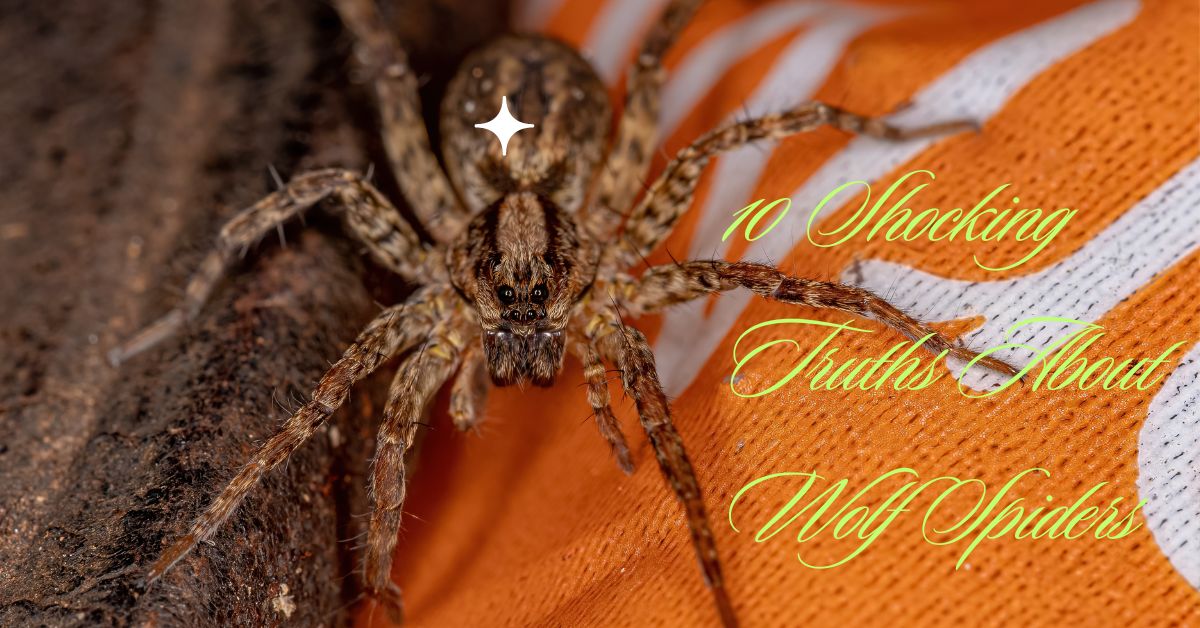
1. Wolf Insects Are Talented Hunters
Wolf spiders do not depend on networks to capture their prey. Instep, they utilize their speed and deftness to chase down creepy crawlies and other little animals. Their chasing fashion is comparative to that of wolves, thus their title. These insects can run quickly over the ground, jumping on their prey with precision.
2. They Carry Their Babies on Their Backs
One of the most bewildering realities around wolf insects is that the female carries her egg sac with her, and once the spiderlings bring forth, they cling to her back for security. This special frame of maternal care is uncommon in the insect world and illustrates the solid bond between the mother and her offspring.
3. Wolf spiders Have Mind blowing Vision
Unlike numerous other insects that depend on vibrations to distinguish prey, wolf spiders have fabulous vision. Their huge, forward-facing eyes donate them binocular vision, which makes a difference them judge separations and precisely strike their prey.
4. A few Species Can Walk on Water
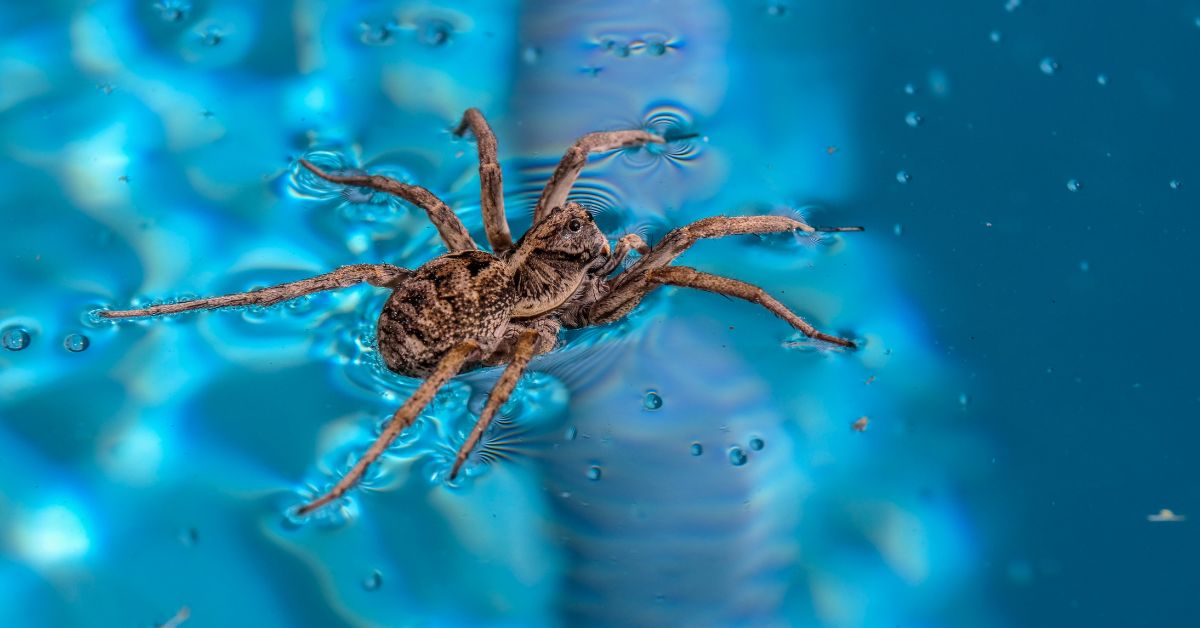
Believe it or not, a few wolf insects are able of strolling on water. This capacity permits them to chase in oceanic situations or elude predators by skimming over the water’s surface.
5. They Don’t Turn Webs
Unlike web-building insects, wolf spiders do not make networks to capture their prey. Instep, they are dynamic seekers that depend on their speed and quality to capture nourishment. Be that as it may, they do turn silk for other purposes, such as lining their burrows or making egg sacs.
6. Wolf Insects Are Found All Over the World
Wolf spiders are a exceedingly versatile species that can be found on each landmass but Antarctica. They flourish in different situations, from deserts to prairies to timberlands, making them one of the most far reaching creepy crawly species.
7. They Have a Wide Assortment of Habitats
Wolf spiders can live in differing living spaces, counting leaf litter, prairies, woodlands, deserts, and indeed urban zones. A few species are burrowers, making complex burrows in the ground, whereas others favor to cover up beneath rocks or logs.
8. Wolf Insects Can Live Up to Two Years
The life expectancy of a wolf spiders shifts depending on the species and natural conditions, but numerous wolf creepy crawlies can live up to two a long time. Amid this time, they go through a few molting stages some time recently coming to adulthood.
9. They Are Not Forceful Towards Humans
Despite their scaring appearance, wolf insects are not forceful towards people. They will ordinarily attempt to escape when gone up against, and chomps are uncommon. Indeed when a wolf spiders does nibble, the poison is not perilous to people and more often than not as it were causes gentle irritation.
10. Wolf spiders Can Be Advantageous for Gardens
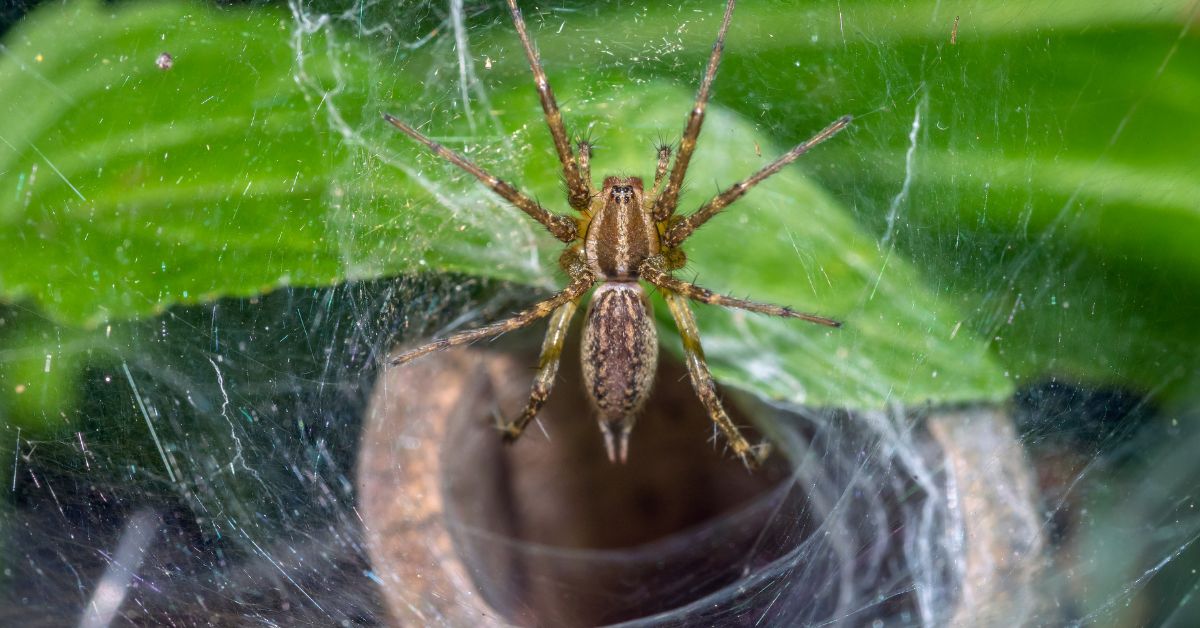
Wolf creepy crawlies are normal bug controllers, bolstering on creepy crawlies that might something else hurt plants. Having wolf insects in your plant can offer assistance diminish the require for chemical pesticides, making them advantageous partners for gardeners.
5. How to Recognize a Wolf Spider
Identifying a wolf spiders can be dubious due to the assortment of species, but there are a few key characteristics to see for. Wolf creepy crawlies are for the most part strong and shaggy, with a unmistakable eye course of action (three lines of eyes). They frequently have brown, gray, or dark coloration with stripes or designs on their bodies.
- Their chasing behavior is another clue: if you see a spiders effectively chasing prey or maybe than sitting in a web, there’s a great chance it’s a wolf creepy crawly. Also, wolf creepy crawlies tend to move rapidly and can frequently be found on the ground or stowing away beneath debris.
6. Wolf spiders Territories: Where Do They Live?
Wolf insects are inconceivably flexible when it comes to territories. They can be found in a wide run of situations, including:
- Forests
- Grasslands
- Deserts
- Wetlands
- Urban areas
Some wolf creepy crawlies lean toward to burrow, making underground burrows where they stow away amid the day and develop at night to chase. Others take shield beneath rocks, logs, or leaf litter. In urban zones, wolf creepy crawlies may be found in gardens, cellars, or indeed interior homes, particularly amid cooler months when they look for warmth.
7. Are Wolf spiders Unsafe to Humans?
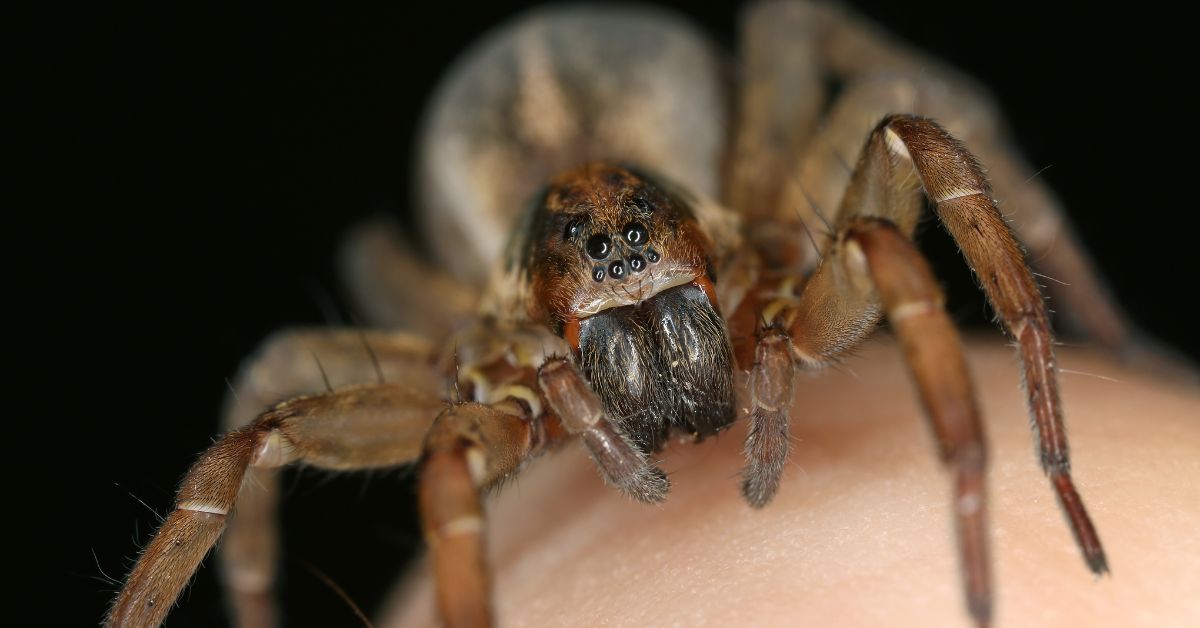
Wolf spiders may see scaring, but they are by and large safe to people. They are not forceful and will as a rule as it were nibble if undermined or incited. Indeed if a wolf insect does chomp, the poison is gentle and regularly as it were causes minor side effects like redness, swelling, and tingling. In any case, as with any insect chomp, it’s basic to clean the wound and screen for any signs of an unfavorably susceptible reaction.
- For those who are concerned approximately wolf insects in their homes, it’s vital to keep in mind that they are advantageous predators that offer assistance control creepy crawly populaces. In most cases, it’s best to take off them alone or carefully move them outside.
8. Wolf Insect Eat less: What Do They Eat?
Wolf insects are carnivorous and essentially bolster on creepy crawlies and other little spineless creatures. Their eat less includes:
- Crickets
- Ants
- Beetles
- Grasshoppers
- Moths
- Other spiders
Wolf insects are deft seekers, meaning they will eat anything prey is accessible. They utilize their fabulous vision to spot prey, at that point chase it down with speed and exactness. Once caught, they infuse poison to immobilize the prey and start feeding.
9. The Life Cycle of a Wolf Spider
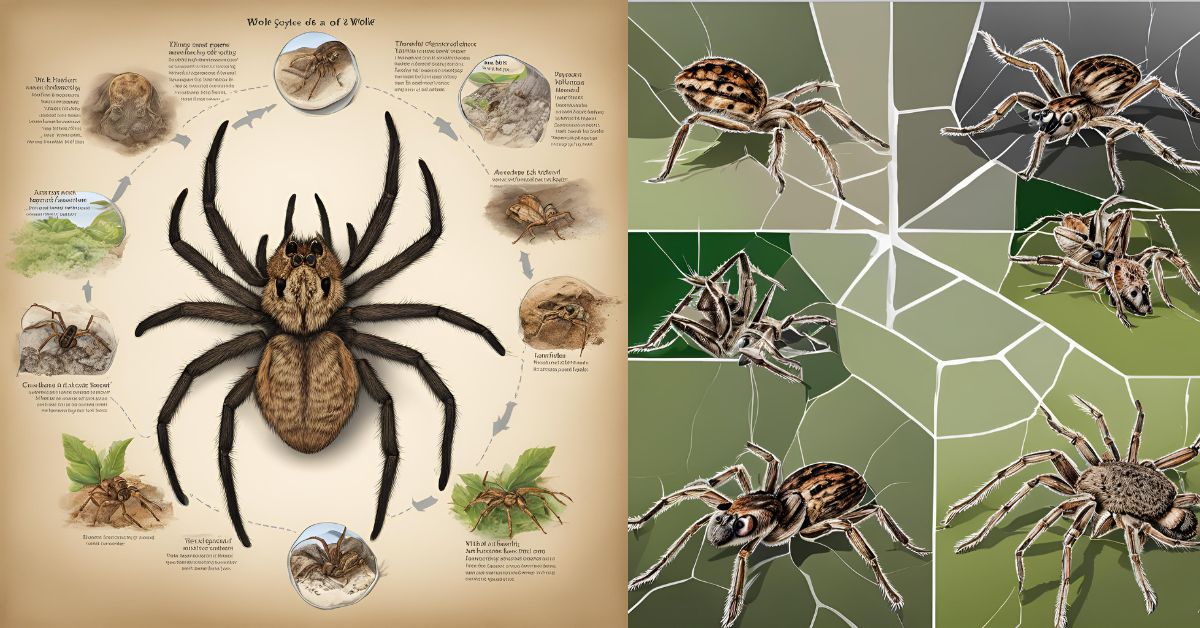
The life cycle of a wolf insect starts with the female laying her eggs in a silk sac, which she carries connected to her spinnerets. After a few weeks, the eggs bring forth, and the spiderlings climb onto their mother’s back, where they stay for a few days until they are prepared to scatter and battle for themselves.
Wolf creepy crawlies go through a few molting stages as they develop, shedding their exoskeletons to make room for their growing bodies. Depending on the species and natural conditions, wolf creepy crawlies can live for one to two a long time, coming to development after a few months.
Grass Spiders Exposed: 10 Astonishing Facts That Will Leave You Speechless
10. FAQs About Wolf Spiders
Q: How enormous do wolf spiders get?
A: Wolf spiders can extend in measure from 0.5 to 2 inches (1.2 to 5 centimeters) in body length, with a leg span that can reach up to 4 inches (10 centimeters) for bigger species.
Q: Are wolf spiders unsafe to people?
A: No, wolf insects are not unsafe to people. They are not forceful, and their chomps are as a rule gentle, causing as it were minor irritation.
Q: Where do wolf spiders live?
A: Wolf insects can be found in different territories, counting timberlands, prairies, deserts, wetlands, and urban zones. They regularly stow away beneath rocks, logs, or in burrows.
Q: What do wolf insects eat?
A: Wolf creepy crawlies basically nourish on spiders and other little spineless creatures, such as crickets, ants, insects, and grasshoppers.
Q: How do wolf insects chase?
A: Wolf insects are dynamic seekers that chase down their prey or maybe than catching it in networks. They depend on their speed, deftness, and amazing vision to capture their food.
Conclusion
Wolf spiders are genuinely surprising animals that offer a see into the different and complex world of spiders. With their noteworthy chasing abilities, special eye course of action, and captivating behaviors, wolf spiders are more than fair another insect species—they are a confirmation to the versatility and strength of nature.
Whether you’re captivated by their estimate, captivated by their eyes, or flabbergasted by their astounding actualities, wolf insects are worth learning around and increasing in value. So, the following time you experience a wolf insect, keep in mind that these intriguing 8-legged creature play an fundamental part in our environments and merit our respect.
Wolf spiders | Measure, Eyes, & Actualities 10 Astounding Truths You Won’t Believe—now that you know more around these extraordinary animals, you can see why they proceed to capture the creative energy of individuals around the world.
Why Orb Weavers Are Nature’s Silent Architects: 9 Mind-Blowing Reasons
“#1Are Black Widows as Dangerous as They Seem? Essential Facts and Myths Debunked!”
Weaver Spiders: 8 Mind-Blowing Facts That Will Captivate You Unlock the Secrets!
Spiders 101:Types of Spiders Unveiled A Visual Tour of the Most Interesting Species
